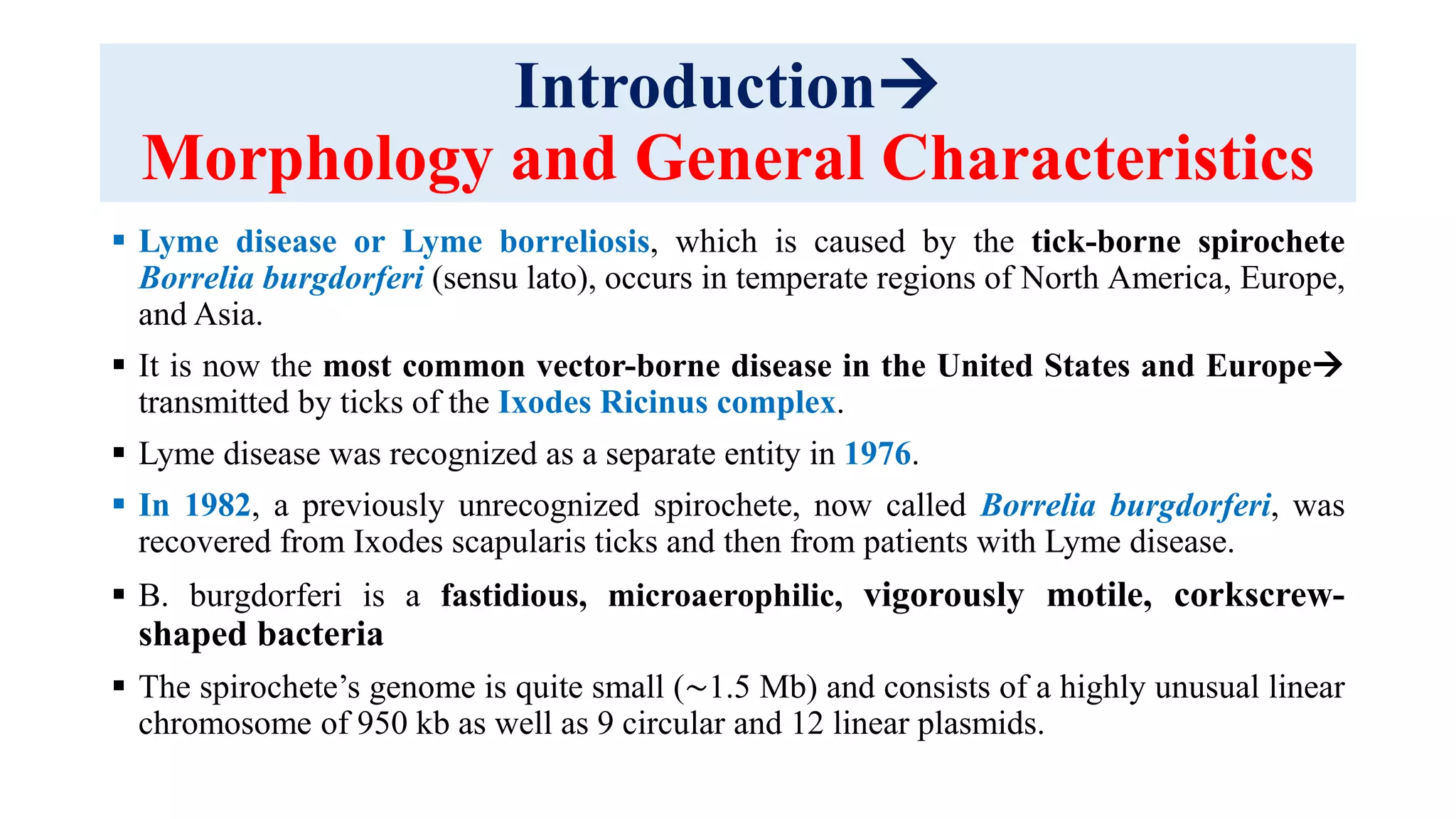Borrelia burgdorferi is a spirochete responsible for Lyme disease, primarily transmitted by Ixodes ticks in temperate regions. The disease manifests in three stages: early localized infection with erythema migrans, disseminated infection affecting multiple systems, and persistent complications like arthritis and neurological issues in the late stage. Despite immune responses, Borrelia can evade host defenses, and infection can lead to various clinical symptoms over time, sometimes requiring prolonged treatment.

















































